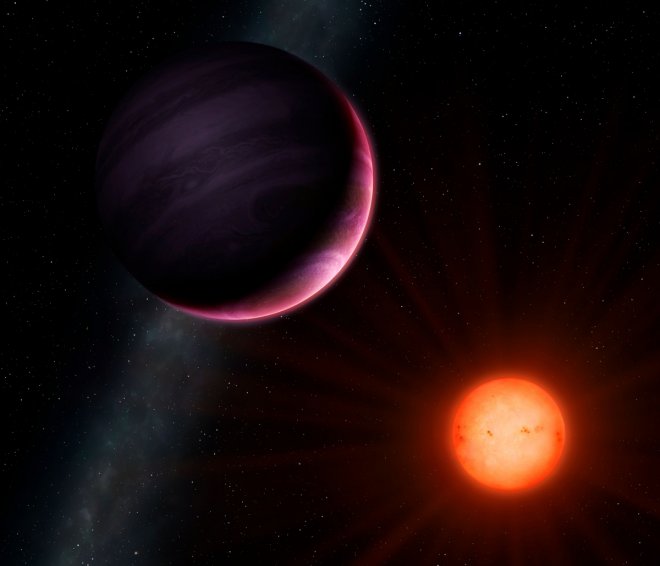
Research led by astronomers at the University of Warwick have discovered a huge gaseous planet near its small, faint parent star, which turns out to contradict the existing planet formation theory.
The theories of planet formation say that a planet of huge size cannot be formed around a small star. According to the theories, small stars can readily form rocky planets but do not gather enough material together to form Jupiter-sized planets.
The Royal Astronomical Society has, however, recognized the newly discovered planet and published its details in their Journal Monthly Notices. The gaseous planet, which is named 'NGTS-1b', also known as 'hot Jupiter', as it is believed to have size as much as the Jupiter's size, is believed to be very hot because of its proximity to the sun and due to the hot gaseous atmosphere.
The newly found planet is very close to its sun, which is about 3% of the distance between the Earth and the Sun. It has 20% less mass than the Jupiter. The planet takes only 2.6 days to complete one orbit, whereas earth takes 365 days for one orbiting which is marked as a year.
The Next-Generation Transit Survey (NGTS) which employs 12 telescopes for the sky surveillance made the first spotting of the planet. The researchers monitored the region of the night sky with innovative red-sensitive cameras for several months to find the red light emitted from the star. This data was used to measure the radial velocity of the star and to find its size, position, and mass. The orbiting of NGTS-1b was calculated by assessing the repeated blocks in the emitted light rays every 2.6 days.
Dr. Daniel Bayliss, lead author of the study, from the University of Warwick stated, "The discovery of NGTS-1b was a complete surprise to us – such massive planets were not thought to exist around small stars – importantly, our challenge how is to find out how common these type of planets are in the Galaxy, and with the new Next-Generation Transit Survey Facility we are well-placed to do just that."
Otherwise, KELT-9b, which is about three times the mass of Jupiter and twice its size, is the hottest gas giant planet discovered by the scientists. This planet is hotter than most of the stars and is only a few thousand degrees cooler than our Sun. It was discovered by the astronomers of the Ohio State University and Vanderbilt University, the Kilodegree Extremely Little Telescope(s) (KELT) survey project.
The KELT-9b orbits its sun in a flattened egg-shaped sphere plane. The hot, blue host star of the planet is about 2.5 times the mass of Earth's Sun. The planet emits radiations while it rotates in an orbital which passes through the two polar regions of its star. The average temperature of the planet's side which faces its sun would be around 7,800 degrees Fahrenheit (4,300 Celsius). The other side, which is opposite to sun, will also experience high temperatures.
According to reports, the orbital time of the KELT-9b has been calculated as 1.5 days. It has been believed that the orbiting speed of the planet will decrease in next 150 years.









